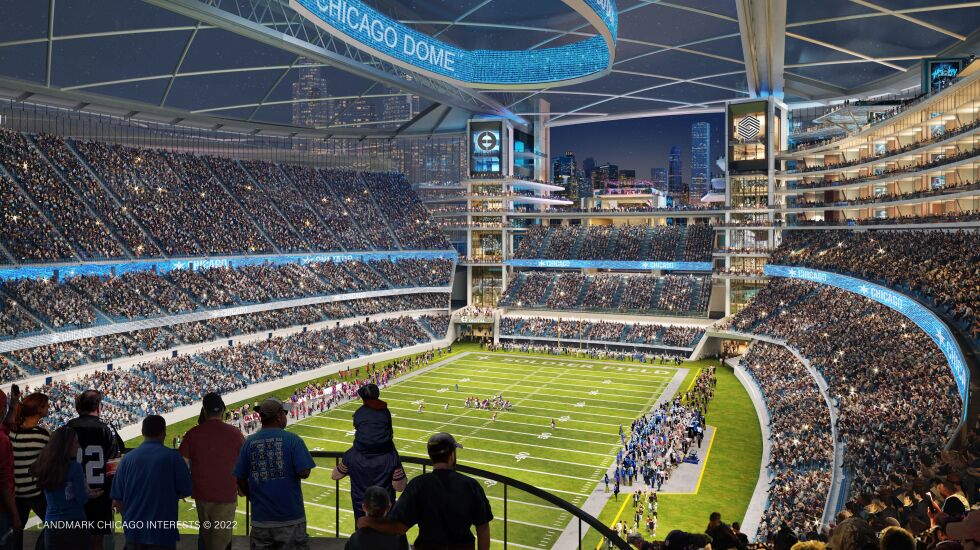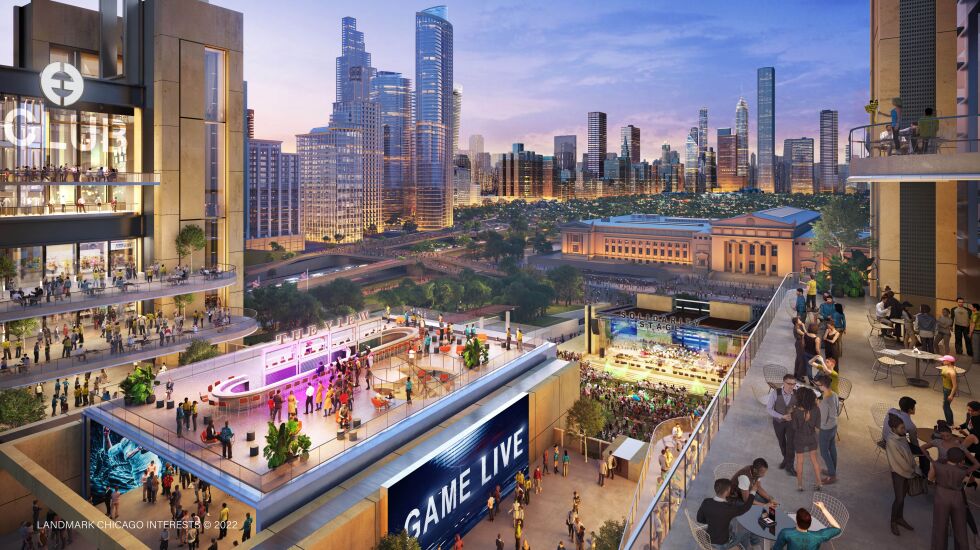
During a wide-ranging interview with the Chicago Sun-Times, city Planning and Development Commissioner Maurice Cox was asked what, if any, portion of Mayor Lori Lightfoot’s $2.2 billion plan to dome and renovate Soldier Field would proceed if the Bears choose to make the move to Arlington Heights.
“That’s largely why we took a broad look at how the museum campus could become a more attractive destination” as well as how “Soldier Field could be a year-round venue for arts and entertainment,” Cox said.
“That is independent of the question of the Bears. We can get 365-days-a-year activity out of a Soldier Field that has been renewed and capped. That idea is valid independent of what franchise occupies it.”
Even if the Bears leave Chicago, Cox said putting a dome over Soldier Field will remain “one of the options that extends its use for 365 days a year.”
“That has been one of the real benefits of having this potential challenge of retaining the Bears or not in Chicago. It’s really forced the city to look at utilization of that amazing event venue,” Cox told the Sun-Times this week.
Cox was asked how the mayor’s $2.2 billion plan to expand, renovate and put a lid on Soldier Field would be financed and whether beleaguered Chicago taxpayers would tolerate being on the hook for renovating a stadium with only one major tenant — the Chicago Fire.
He would only say financing stadium renovations is “pretty complex,” and there are “multiple scenarios for how it could be done.”
“We haven’t landed on any single one. But we know that, architecturally, it’s feasible, and there are financial models for how it’s been done. The job will be to dig deep to look at that, and then, when we have scenarios, to present them to the public for consideration,” the commissioner said.
Even without the Bears, the new vision to reimagine the museum campus outlined by Lightfoot’s working group has enormous potential to reclaim parkland and make Northerly Island the nature preserve it was intended to be.
Friends of the Parks Executive Director Juanita Irizarry told the Sun-Times earlier this summer she was justifiably excited about at least beginning to honor the promise Mayor Richard M. Daley made years ago when he created the Museum Campus: moving Soldier Field parking lots to the west side of DuSable Lake Shore Drive.
When Daley famously sent in a fleet of bulldozers to carve giant X’s into the only runway at Meigs Field, the goal supposedly was to turn Northerly Island into a nature park that would provide a genuine urban oasis.
Instead came Huntington Bank Pavilion, a 30,000-seat venue for outdoor concerts. It was supposed to be temporary but has been open for 17 years.
The working group called the pavilion “incongruous” with Northerly Island and recommended removing it and building a 9,000-seat venue for outdoor concerts between Soldier Field and the Field Museum. That recommendation was music to Irizarry’s ears.

“Friends of the Parks has, for a long time, been saying that the Huntington venue needed to go. It’s a bad place for a concert venue, and Northerly Island is often blocked off to other uses when there is an event going on” there, she said.
“We are thrilled at talk of removing that. … It was not meant to be there permanently. The Park District used to tell us all the time that it was there to generate revenue to help pay off the costs associated with developing Northerly Island and once those costs were paid off, it would go. That has turned out not to be the case.”
Cox agreed that getting rid of the concert pavilion on Northerly Island makes sense.
“We now know that there are options that could return Northerly Island to its original intent. We know a lot more now than we did before this museum campus framework,” he said.
“The whole intent was to expand our options and open up things that we had not previously seen. See it with a fresh set of eyes. And now, we can go from there. What we’re trying to do now is dig deep on what are some of the short-term, near-term and ultimately long-term outcomes from the study. The important thing is to show momentum and do some of the things that can be imageable and show progress, then take our time and thoughtfully study the implications of some of the ones that are more significant changes to the way the museum campus operates.”







